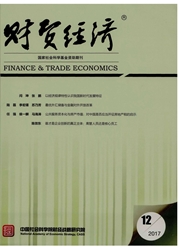

 中文摘要:
中文摘要:
本文以中国省际面板数据为样本,模拟分析了国情无约束和国情有约束条件下,中国实施全国性碳排放权交易的潜在成效。结果表明:(1)作为碳交易理论基石的二氧化碳影子价格,样本年间总体趋于上升,省份间和八大区域间的绝对差距均呈现不断扩大态势,但相对差距则趋于不断缩小。(2)以最大化降低全国碳强度为目标,在维持全国GDP总量不变的国情无约束情景下,碳交易能够降低碳强度20.06%。如果放松对全国GDP总量的硬性约束,并对各地区施加经济增长和环境保护的现实约束,实施碳交易能够降低碳强度22.15%。(3)中国当前的整体碳强度推进进程完成了哥本哈根会议承诺的阶段性目标,通过引入碳排放权的省际交易,能有力推进碳强度的改良进程,甚至能满足哥本哈根会议承诺的总体要求。
 英文摘要:
英文摘要:
Taking provincial panel data of China as sample, this paper simulates and analyzes the potential effect of carbon emissions trading (carbon trading) in China under the condition of unconstrained and constrained national conditions respectively. The results are as follows: (1) As the theoretical basis of carbon trading, the shadow price of carbon dioxide is inclined to rise generally. The absolute gap between provinces and eight regions tends to increase, but the relative between provinces and eight regions tends to decrease. (2) Setting the reduction of national carbon intensity to the greatest degree as the aim, under the condition of the given national GDP, the effect of carbon trading can reduce carbon intensity by 20.06~. When the strict constraint of national GDP is relaxed, and the constraint of economic growth and environment conservation of each region is imposed, the effect of carbon trading can reduce carbon intensity by 22.20 %. (4) General carbon intensity of China in 2012 completed the stage goal of the commitment made in Copenhagen Conference, and when introducing the provincial trade of carbon emissions, not only the reducing process of carbon intensity can be improved, but also the general requirements of the commitment made in Copenhagen Conference can be met.
 同期刊论文项目
同期刊论文项目
 同项目期刊论文
同项目期刊论文
 期刊信息
期刊信息
